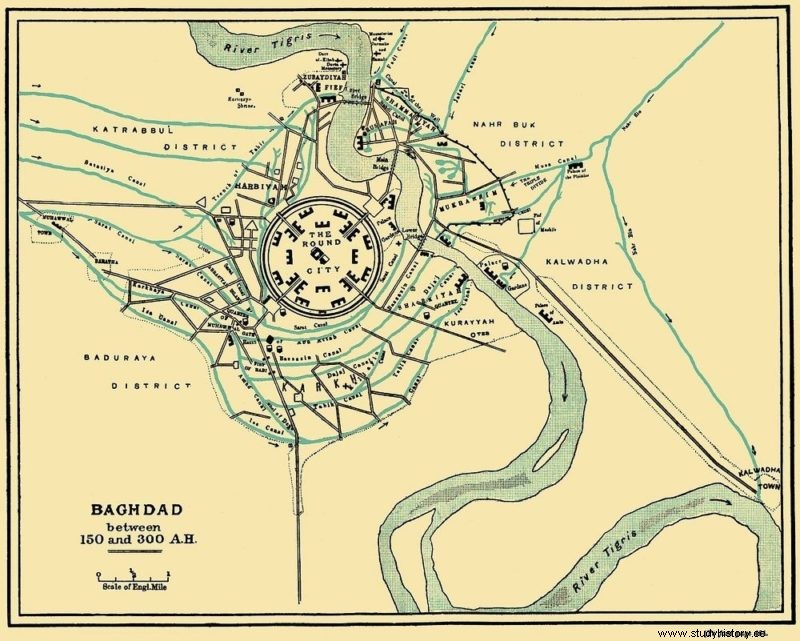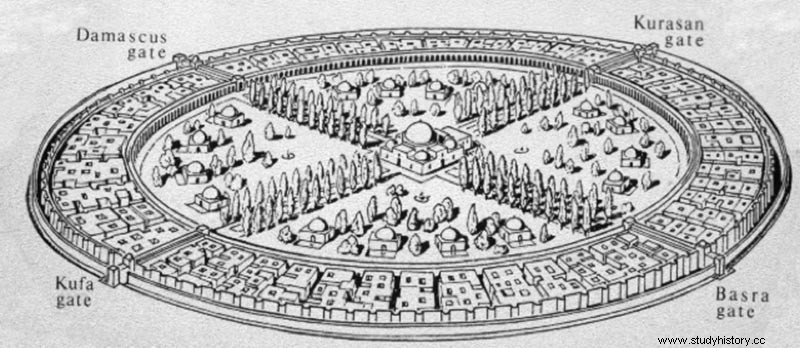Founded in the year 762 by Al-Mansur, the first caliph of the Abbasid dynasty, and located 85 kilometers north of ancient Babylon, Baghdad was a titanic and revolutionary project for the time, a milestone in the history of urban design as well as an indisputable cultural reference in the following centuries.
According to the sources, Al-Mansur commissioned the design to Naubakht, a Zoroastrian, and Marshallah, an Iranian Jew, instructing them to design a perfect circle as a tribute to the geometric teachings of Euclid, whom he had studied and deeply admired. In modern times we have seen numerous innovative projects that also used the circle to plan revolutionary cities, attending to functional and habitability issues. It is possible that Al-Mansur also had these issues in mind, although no source mentions it.

Al-Mansur called the new capital after him Madinat al-Salaam (city of peace ), and that was the name that appeared on official coins and seals until the 11th century, when the term of Sumerian origin by which its inhabitants had always known it was finally imposed:Baghdad.
The city was built as a perfect circle, under the supervision of the Barmachids, the family of viziers and ministers of Buddhist origin who served the first Abbasid caliphs, and was completed in just 4 years. By 768 the plan was complete. It consisted of a perfect circle about 2 kilometers in diameter with parks, gardens and villas surrounding the mosque and the Al-Mansur palace.
The scheme replicated the Sassanid Persian of the ancient city of Gur, built 500 years earlier following the same circular design.
More than 100,000 workers and engineers from around the known world were involved in the colossal undertaking, which was built using 1.5-inch bricks that were made on site, and marble for the main parts and the steps leading down to the river.
It had water reserves at its north and south ends, which allowed all the houses to have a constant supply, which was rare at the time.

The walls had a door at each cardinal point, separated from each other about 2.4 kilometers, and their thickness was 44 meters at the base and 12 meters at the top, about 30 meters high. This wall was surrounded by another 50 meters thick, with towers and battlements. From each door an avenue led to the center of the city, with arcades, shops and bazaars, and from each of them the rest of the small arteries of the city left.
For centuries, Baghdad was considered the culmination of urbanism, the most perfect circular city in the world, the most spacious and with the best defenses. And it was not for less.
Unfortunately, nothing remains of her today. The last remains were demolished in the 1870s by Midhat Pasha, the Ottoman governor of Baghdad, to make way for public parks, hospitals, schools, roads and bridges, ushering the city into the modern world.
